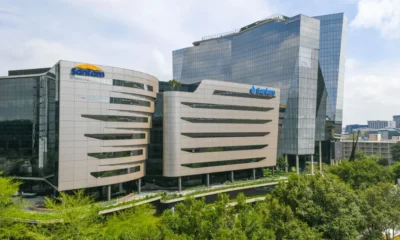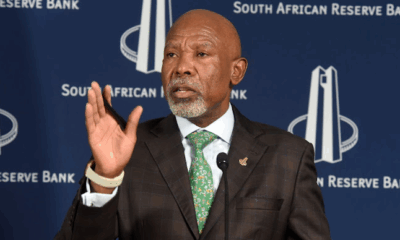News
Economic Jitters: South Africa’s PMI Drop Signals Fragile Growth

Business confidence tumbles to a four-year low as private sector activity flattens out.
Signs of economic strain are starting to show in South Africa, with the latest S&P Global Purchasing Managers’ Index (PMI) for June 2025 dropping to 50.1, down from 50.8 in May. The barely-above-50 reading signals the weakest expansion in private sector activity this year and has economists watching closely for a possible downturn.
The PMI, a closely watched gauge of business health, suggests that the private sector is teetering on the edge of stagnation, with output falling, new business volumes sliding, and confidence sinking to its lowest since July 2021.
A Country on Pause
While a PMI above 50 typically signals growth, the marginal June reading is a clear sign that momentum has slowed. New orders are declining, output is contracting, and firms are growing increasingly anxious about both domestic and global headwinds.
“Firms are growing nervous about the broader economic outlook,” said David Owen, Senior Economist at S&P Global Market Intelligence.
“While hiring continues and supply chains are improving, overall confidence is taking a knock.”
This downturn in sentiment is matched by the Absa PMI, released earlier in the week, which remains in contraction territory at 48.5—marking the eighth straight month of contraction in South Africa’s manufacturing sector.
Confidence Wanes, Output Falls
The key indicators behind the June S&P PMI show a mixed bag:
-
Output declined for the first time in three months.
-
New business volumes dropped, largely due to a continued slump in export demand.
-
Business expectations sank to a four-year low as firms reported growing uncertainty over government policy and global demand.
While some positive sentiment stemmed from new projects and client outreach, this was not enough to offset growing concerns.
Some Bright Spots in a Dim Outlook
Despite the fragile environment, there were a few glimmers of hope:
-
Employment figures rose, especially in the services sector.
-
The supply chain environment improved, marking the longest run of enhanced conditions in nearly nine years.
-
A stronger rand allowed some businesses to hold or reduce prices, helping them stay competitive.
These gains, however, were not enough to prevent rising input costs across all sectors, with wholesale and retail bearing the brunt of inflationary pressure. Firms cited rising purchase prices and increasing wages as key cost drivers.
“We’re seeing cost pressures mount, but selling prices remain modest due to fierce market competition,” Owen added.
What This Means for Q2 GDP
While the June PMI reading reflects a loss of momentum, it still remains higher than first-quarter figures, offering a sliver of hope for a solid Q2 GDP print. However, economists warn that without renewed policy certainty, stronger export demand, and domestic investment, the current trajectory could slide toward stagnation—or worse, contraction.
A Barometer for Broader Issues
The PMI isn’t just a data point, it’s a reflection of South Africa’s economic psyche. From infrastructure strains to policy uncertainty and global volatility, June’s results are a sign that confidence is fragile and recovery is far from guaranteed.
Unless the private sector sees clearer signals of stability, the country’s already sluggish growth outlook may struggle to stay above water in the second half of 2025.
{Source: IOL}
Follow Joburg ETC on Facebook, Twitter , TikTok and Instagram
For more News in Johannesburg, visit joburgetc.com



























